#SRRC china
Text
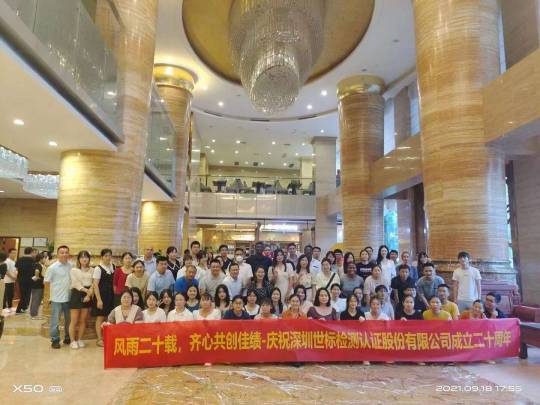
#World Standardization Certification & Testing Group (Shenzhen) Co.#Ltd#ccc china#SRRC china#NAL China#www.xbaohui.com
1 note
·
View note
Text
6 Tips to Reduce the Risks of Hardware Entrepreneurship

In this case, you probably need to start from scratch: go deep into the market, understand the demand, and run through the supply chain.
Judging from my personal HE Tuber actual product experience: if you do not have a unique advantage or do not have matching resources in the market, the probability of failure is extremely high.
No matter how perfect the product is, no matter how sure you are that you will be a huge success.
You should always strive to minimize risk.
Of course, you can't completely eliminate risk.
But risks can be minimized, investments protected and chances of success increased.
The odds are generally better for hardware startups.
As a start-up, you need to build every possible advantage to help you achieve your financial goals.
Here are six ways you can gain a competitive advantage when bringing new hardware products to market to reduce risk and increase your chances of success.
Hire multiple independent engineers
When it comes to developing electronic hardware products, one of the best ways to reduce risk and increase your chances of success is to hire at least two engineers:
An engineer comes to actually develop the electronics;
Another independent engineer comes to review the design;
Then prototypes are produced.
No matter how good an engineer is, mistakes are almost always made when designing anything complex.
You should always strive to gather as much feedback as possible.
Design reviews are key to preventing mistakes. One thing is certain:
Any hardware product developed by a large company is reviewed by multiple engineers.
For startups, if you have the ability to review.
This will undoubtedly save a lot of personnel costs and be more efficient.
Start with small batches
Your first priority is to get your product to market as quickly as possible and as cheaply as possible.
while minimizing risk.
Risk is something you should focus on before your product achieves significant sales success.
Take the smart lock product that I was personally responsible for as an example. At that time, market verification had been initially completed.
Then they started to build assembly plants and made a lot of investment in mass production, and the capital chain was almost broken.
That is, if you go bankrupt before getting your product to market.
Then there is no point in focusing on maximizing profits.
Use electronic modules
One of the best ways to reduce electronics complexity, and therefore risk, is to use proven electronic modules for certain functions.
For example, if your product requires wireless functionality, you will need to obtain a radio certification license from your region or country.
Certification usually takes a long time, and some also charge certification fees.
For example, in China you need to obtain radio certification SRRC.
For example, when I personally used Bluetooth and WiFi when making products in the early days, I needed to undergo SRRC certification at this time.
At the beginning, because I was not clear about the specific testing standards, I spent about a month and visited the certification agency three times.
Electronic modules are independent components designed to perform specific functions and are electronic circuits that are easily integrated into other products.
For example, some networking modules of Tuya and Espressif.
Of course, the reality is that most products still require some custom circuit design.
This is because using modules entirely to make products will greatly increase the unit cost.
Secondly, if your product is very small.
For example, in wearable technology, the module size may be too large, making it impossible to use modules for design.
Make full use of manufacturer resources
Most manufacturers have some resources that include assistance with design, engineering, 3D modeling, and prototyping during the product development process.
They may also connect you with suppliers, such as component and packaging suppliers.
If you have a viable product and maintain consistent sales.
They can also provide you with billing terms, such as allowing you to pay within 30 to 90 days after shipment, etc.
This will greatly improve your cash flow and increase your competitiveness.
When you work with a manufacturer, they generally allow for amortization of tooling costs.
Build a customer base before building a product
You need market feedback from day one.
Don’t wait until your product is ready to hit the market before you start thinking about how to sell it.
You need to gain some market traction as quickly as possible.
Hardware startups face serious challenges, and you can reduce risk and increase your chances of success by exploring these strategies.
This has two benefits:
First, you will be able to get quick market feedback from potential future customers;
Secondly, once your product is available for sale, there will be a large number of customers ready to buy your product.
Pre-sell your products
People may praise your product.
But all the praise means nothing unless it's accompanied by sales.
You need to pre-sell your product and test it in the market.
Getting feedback quickly can let you know whether the product has value and whether it's worth spending more of your resources.
0 notes
Text
Smartphone application for SRRC certification
Smartphone application for SRRC certification
Introduction to SRRC and CMIIT ID, smartwatch SRRC is the State Radio Regulatory Commission of the People's Republic of China, a subsidiary institution of the Ministry of Industry and Information Technology of the People's Republic of China.
A CMIIT ID is the type of approval code for radio transmission equipment. The CMIIT ID of the product is a certificate of approval for sale approved by SRRC after passing the test according to the national standard. Only radio transmission equipment with the type approval code of my country's radio transmission equipment can be sold in my country. For the sales and use of radio transmission equipment, according to the "Regulations of the People's Republic of China on Radio Management" and relevant documents for model approval, the production and import of radio transmission equipment need to undergo model approval for its emission characteristics, and a "radio transmission equipment model approval certificate" is issued. And the model approval code, the model approval code must be marked on the label of the factory equipment.
What does a CMIIT ID mean?
NETGEAR Wireless Network Security Leader Resolves SRRC and CMIIT IDs
CMIIT ID identification
Teach everyone how to look at this number (note that C and P should be marked in red), NETGEAR wireless network security leader analyzes SRRC and CMIIT ID.

3-5 samples
The sponsor submits the original or photocopy "Application Form for Approval of Radio Transmission Equipment Model" and "Registration Form for Equipment Testing Information" that have been completed and stamped with the official seal of the applicant unit (equipment manufacturer); if there is an agent applicant, the "Approval Power of Attorney for Radio Transmission Equipment Model"
1. Submit a copy of the "Business License of Enterprise Legal Person" of the applicant unit (including the agent applicant unit).
2. Submit the technical specification (including software and hardware version numbers) and user manual of the bid equipment model;
3. Submit the circuit diagram and block diagram of the equipment under test.
4. Submit three sets of colour photos printed on A4 paper or an electronic version. The photos should include:
5. Follow SRRC as a whole to find ZHONGREN detection;
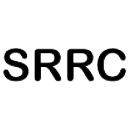
6. Front view;
7. Side view (including launch port, interface and other parts);
8. Rear photo (including launch port, interface and other parts);
Photo of the internal circuit board of the tested equipment
The nameplate (label) of the inspected equipment; the nameplate (label) should clearly show the equipment model, the applicant (equipment manufacturer), the equipment serial number and the approval code CMIIT ID:, and the lower part of the appearance of the photo should also indicate the inspection The structure size of the equipment
ZHONGREN is a comprehensive third-party organization specializing in testing, certification and technical services. It is committed to providing enterprises with One-stop domestic and foreign certification services. It has obtained the accreditation of China's CNAS National Laboratory and thus obtained the International Laboratory Accreditation Organization (ILAC) accreditation.
0 notes
Link
Obtain the SRRC certification hassle-free with #1 compliance consultant? Get your SRRC certificate for China Today. Click here and know about its certification process.
0 notes
Link
Want to get Certification for China to enter Chinese market? Click here and know about all certifications you need like CCC Certification, SRRC Certification, NAL Certification, CEL Certification. Government of China has established certain guidelines for the safety of the final consumer to allievate the potential injury or harmful effects of using an equipment. That's why certificates such as China Compulsory (CCC), MIIT Network Access License, and CMIIT Radio Type Approval are introduced for electric, telecommunication, and wireless equipment.
0 notes
Link
Obtain the SRRC certification hassle-free with #1 compliance consultant? Get your SRRC certificate for China Today. Click here and know about its certification process.
#SRRC certificate#SRRC consultants#china type approval#srrc standard#SRRC certification#SRRC certificate china#SRRC certification china#china srrc certificate
0 notes
Link
Obtain the SRRC certification hassle-free with #1 compliance consultant? Get your SRRC certificate for China Today. Click here and know about its certification process.
State Radio Regulatory Commission (SRRC) is an authority that is responsible for providing certificates to the appliances and equipment which have radio transmitting functions.
#SRRC certificate#SRRC consultants#china type approval#SRRC certification#SRRC certificate china#SRRC certification china#china srrc certificate
0 notes
Text
Deeplight Technology Bluetooth protocol SRRC certification services
Let’s see why there is a radio transmission equipment type approval certification\SRRC certification. Background: According to the "Regulations of the People's Republic of China on Radio Management"(Regulations of the People's Republic of China on Radio Management), in order to strengthen radio management, maintain the order of air waves, effectively develop and utilize radio spectrum resources, and ensure various radio services.
The Regulation shall be observed in the use of radio frequencies, the establishment and use of radio stations (stations), the R&D, production, import, sale and maintenance of radio transmitting equipment.
All radio transmission equipment produced in the territory of the People’s Republic of China must hold the "Radio Transmission Equipment Type Approval"certificate issued by the State Radio Regulation Committee (SRRC) after the type approval.The type approval code CMIIT ID must be marked on the label of the equipment.
Annexes :
1. Radio Transmission Equipment Type Approval Certificate
(sample)
2. Application Form for Radio Transmission Equipment Type Approval (sample)
3. Application Form for the Importation of Mechanical and
Electrical Products (sample)
4. Certificate for the Importation of Mechanical and Electrical
Products (sample)
5. Registration Form for the Importation of Mechanical and
Electrical Products (sample)
6. Declaration Form for Customs Entry of Radio Equipment
(sample)
7. Ratification Statement for Customs Entry of Radio Equipment (sample)
For any radio transmission equipment that are exported to China, the foreign businessman involved should possess a “ Radio Transmission Equipment Type Approval Certificate ” ( see Annex 1) issued by the Office of State Radio Regulatory Commission of the People’s Republic of China ( hereinafter referred to as SRRC Office ) and a Type Approval Identifier( hereinafter referred to as SRRC ID ) should be marked on the equipment.
Application SRRC need to prepare the information
1 application form (two copies)
2 power of attorney (two copies)
3 customer's business license (license Business)
4 the customer's ISO certificate or company profile and the company's ability to explain
5 the circuit diagram of the product, instruction manuals, block diagrams, related test reports (such as ID FCC)
6 antenna gain (Peak Gain Antenna) and pattern Antenna
7 test instruction (direction Test)
8 the company's business license (annual inspection can not be expired)
9 EUT color photos 3 copies (must contain the various interfaces and the side)
10 frequency channel control table (if there are a lot of work channels to provide, such as DSSS or FHSS working mode of the product)
Deeplight Technology specially arranges professional RF engineers to directly connect with SRRC let you save time and effort, one-stop finish SRRC certificate.
Email: [email protected] WeChat:dlcert
Mobile:+86-18038042309 Tel:+86-755-8920 2795
0 notes
Photo

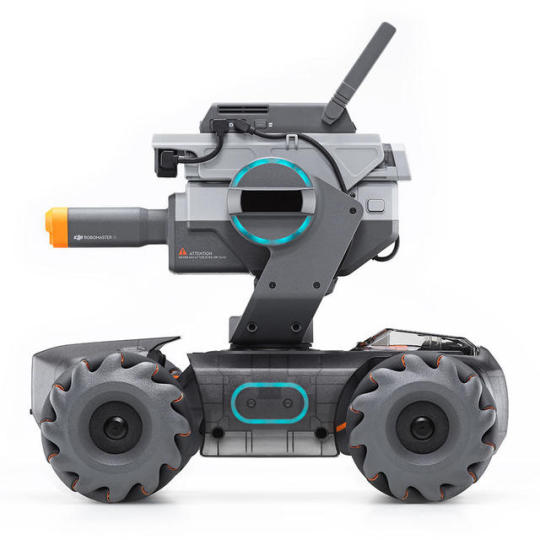


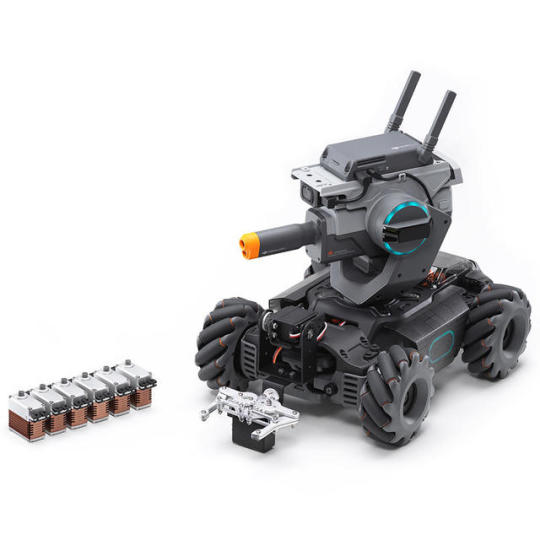


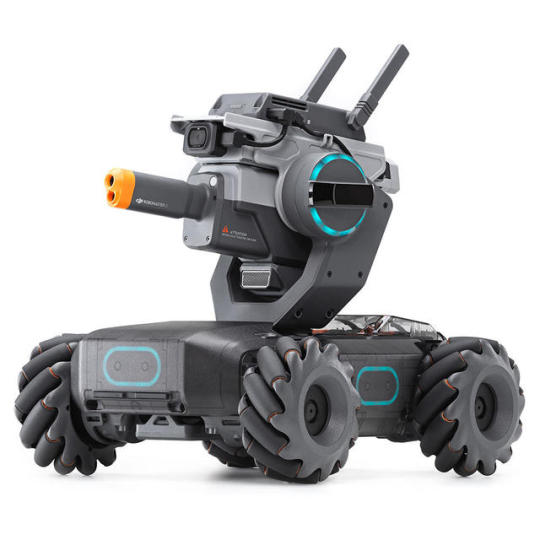
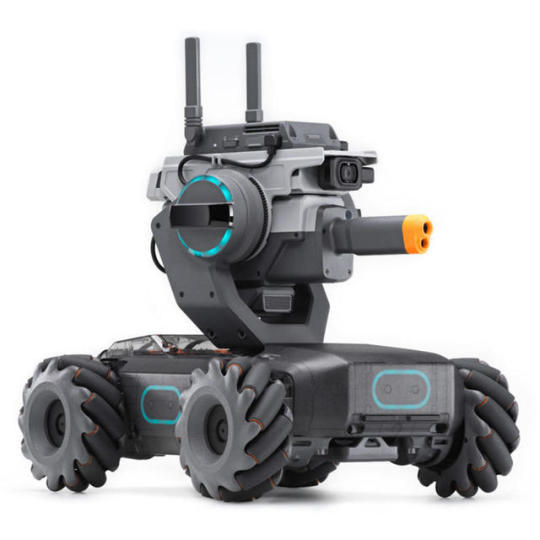
YOUTUBE LINK
http://bit.ly/2YB17NJ
DJI Robomaster S1 STEAM DIY 4WD Brushless HD FPV APP Control Intelligent Educational Robot With AI Modules Support Scratch 3.0 Python Program
BUY NOW
http://fas.st/87COi
Description:
Brand: DJI
Item: Robomaster S1
Product: Smart RC Robot
Battery: 2400Mah Rechargable Lipo Battery
APP, Manual, other information: Click here
Specifiction:
Camera
FOV:120°
Max Still Photo Resolution: 2560×1440
Max Video Resolution: FHD: 1080/30fps / HD: 720/30fps
Max Video Bitrate: 16 Mbps
Photo Format: JPEG
Video Format: MP4
Sensor: CMOS 1/4″; Effective pixels: 5 MP
Operating Temperature Range: -10 to 40 °C (14 to 104 °F)
Narrow Infrared Units:
Effective Range [1]: 6 m (in indoor lighting conditions)
Effective Area: Varies from 10°to 40°
Effective area decreases as distance from the target increases.
Wide Infrared Units:
Effective Range [1]: 3 m (in indoor lighting conditions)
Effective Width: 360° (in indoor lighting conditions)
Hit Detector:
Detection Requirements: For the Hit Detector to be activated, the following conditions must be met: Gel bead diameter ≥ 6mm, launching speed ≥20m/s, and the angle between the hit direction and hit detector plane is no less than 45°.
Maximum Detection Frequency: 15 Hz
DJI Robomaster S1:
Weight: Approx. 3.3 kg
Dimensions: 320×240×270 mm (length × width × height)
Chassis Speed Range:
0-3.5 m/s (forward)
0-2.5 m/s (backward)
0-2.8 m/s (sideways)
Max Chassis Rotational Speed: 600°/s
M3508I Brushless Motor:
Max Rotational Speed: 1000 rpm
Max Torque: 0.25N*m
Max Output Power: 19 W
Operating Temperature Range: -10 to 40 °C (14 to 104 °F)
Driver: FOC
Control Method: Closed-loop speed control
Protection: Overvoltage/Overtemperature/Soft-start/Short-circuit/Chip and sensor anomaly detection
Control:
Controllable Launching Frequency: 1-8/s
Max Launching Frequency: 10/s
Initial Launching Speed: Approx. 26 m/s
Average Load: Approx. 430
Gimbal:
Controllable Range: Pitch: -20° to +35°/ Yaw: ±250°
Mechanical Range: Pitch: -24° to +41° / Yaw: ±270°
Max Rotational Speed: 540°/s
Vibration Control (on the flat surface): ±0.02°
Intelligent Controller:
Latency (depending on environmental conditions and mobile device):
Connection via Wi-Fi: 80-100ms /Connection via Router: 100-120ms
(unobstructed, free of interference)
Live View Quality: 720p/30fps
Max Live View Bitrate: 6 Mbps
Operating Frequency: 2.4 GHz, 5.1 GHz, 5.8 GHz
Operating Mode: Connection via Wi-Fi, Connection via Router
Max Transmission Distance (unobstructed, free of interference):
①Connection via Wi-Fi:
FCC, 2.4 GHz 140 m, 5.8 GHz 90 m
CE, 2.4 GHz 140 m, 5.8 GHz 70 m
SRRC, 2.4 GHz 130 m, 5.8 GHz 130 m
MIC, 2.4 GHz 140 m
②Connection via Router:
FCC, 2.4 GHz 180 m, 5.8 GHz 300 m
CE, 2.4 GHz 180 m, 5.1 GHz 100 m
SRRC, 2.4 GHz 180 m, 5.8 GHz 300 m
MIC, 2.4 GHz 170 m, 5.1 GHz 180 m
Transmission Power (EIRP):
①2.400-2.4835 GHz
FCC: ≤30 dBm
SRRC: ≤20 dBm
MIC: ≤20 dBm
②5.170-5.25 GHz
FCC: ≤30 dBm
SRRC: ≤23 dBm
MIC: ≤23 dBm
③5.725-5.850 GHz
FCC: ≤30dBm
SRRC: ≤30dBm
Transmission Standard: IEEE802.11a/b/g/n
Intelligent Battery:
Capacity: 2400 mAh
Nominal Charging Voltage: 10.8 V
Maximum Charging Voltage: 12.6 V
Battery Type: LiPo 3S
Energy: 25.92 Wh
Weight: 169 g
Operating Temperature Range: -10 to 40 °C (14 to 104 °F)
Charging Temperature Range: 5 to 40 °C (41 to 104 °F)
Maximum Charging Power: 29 W
Battery Life in Use: 35 minutes (measured at a constant speed of 2 m/s on a flat surface)
Battery Life on Standby: Approx. 100 minutes
Charger:
Input: 100-240 V, 50-60Hz, 1A
Output Port: 12.6 V=0.8A or 12.6 V=2.2A
Voltage: 12.6 V
Rated Voltage: 28 W
Gel Bead:
Diameter: 5.9-6.8 mm [2]
Weight: 0.12-0.17 g [2]
App:
App: RoboMaster
iOS: 9.0 or later
Android: Android 5.0 or later
Router:
Recommended Routers:
TP-Link TL-WDR8600; TP-Link TL-WDR5640 (China)
TP-Link Archer C7; NETGEAR X6S (International)
Supported SD Cards: capacity up to 64GB
Recommended outdoor power supply solution for routers: Laptop Power Bank (match the input power of the router)
YOUTUBE LINK
http://bit.ly/2YB17NJ
0 notes
Photo
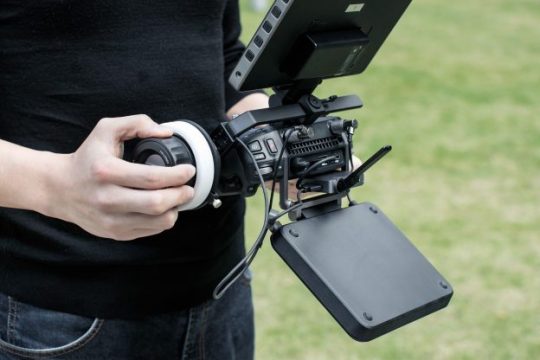
New Post has been published on https://www.updatedc.com/2019/01/22/dji-multilink-connects-the-inspire-2-master-remote-with-up-to-3-additional-controllers/
DJI Multilink Connects the Inspire 2 Master Remote With Up To 3 Additional Controllers
The DJI Multilink wireless connector connects the Inspire 2 master remote with up to 3 additional controllers. The new Multilink allows slave networks to form a star network with the master controller as the hub, this allows aerial filmmakers more options in camera control and in-flight monitoring.
The system has been designed to work exclusively with the Inspire 2 and Cendence remote controllers. The slave controllers can wirelessly send commands to the aircraft through the master controller and receive images and video signals from the aircraft directly.
With a dual-band operating frequency of 2.4 GHz or 5.8 GHz, the slave controllers can maintain a steady connection to the master controller at distances of up to 150m from each other, which allows for efficient filming even in the least ideal environments. The latency between the master controller and the slave controllers is as low as 2.5ms (5.8G) / 3.7ms (2.4G), allowing for a reliable live-feed of the aircraft’s camera to additional monitors.
The DJI Multilink will retail for $99 USD and $282 USD for a combo that includes 3 Multilinks. The new product is available today from the DJI store, DJI flagship stores and authorized dealers in the US, Europe, and mainland China.
Specifications
Operating Frequency: 2400-2483.5 MHz, 5725-5850 MHz
EIRP: 2.4 GHz: FCC<25 dBm, CE<20 dBm, SRRC<20 dBm; 5.8 GHz: FCC<29 dBm, CE<14 dBm, SRRC<19 dBm
Maximum Communication Distance: 150 m (2.4 GHz), 100 m (5.8 GHz)
Input: 4.2-5.5 V, 1 A Max
Maximum Delay (From Master to Slave 3): 7.5 ms (5.8 GHz) / 11.1 ms (2.4 GHz)
Minimum Delay (From Master to Slave 1): 2.5 ms (5.8 GHz) / 3.7 ms (2.4 GHz)
Operation Environment Temperature: -4 ° to 104 ° F (-20 ℃ to 40 ℃)
Compatible DJI Devices for CAN Port: DJI Focus, Inspire 2 GPS module for the remote controller, Patch Antenna
This latest offering from DJI looks to be a nice addition for Inspire 2 owners who are looking to enhance their aerial filmmaking abilities by letting multiple people focus on just a few tasks.
0 notes
Text

Our Team
#What does CCC stand for China?#Is CCC required in China?#How can I get compulsory certificate from China?#What does CCC mean on tires?#CCC certification#china compulsory certification list#Ccc certification process#china ccc catalogue#3C certification#China Compulsory Certification#ccc certificate#CCC - Electrical Products#CCC Testing CCC Mark services#China Network Access License#SRRC Certification for market launch in China#SRRC Type Approval-Radio Certificate of P.R China#SRRC certification for telecommunication products#China Wireless SRRC Certification and Testing#SRRC CERTIFICATION SRRC Certification for market launch in China#SRRC CERTIFICATION#SRRC remit list#SRRC Application#Module SRRC#SRRC sample#Serial SRRC#Bluetooth SRRC#WLAN SRRC#CCC category#CCC Application#CCC factory inspection
0 notes
Text
MDBT42 Safety Regulation Granted (Nordic nRF52832 Solution)
MDBT42 Safety Regulation Granted (Nordic nRF52832 Solution)
Following by Raytac’s policy, all Raytac’s modules need to follow the module policy.
Here, we are pleased to announce that our MDBT42 module, Nordic nRF52832 solution, has completed the safety regulation testing.
(more…)
View On WordPress
#bluetooth#BT4.1#BT4.2#Canada#China#FCC#IC#Japan#KC#Korea#MDBT42#MDBT42-P#Module#NCC#Nordic#nRF52832#Raytac#SRRC#Telec#USA
0 notes
Text
Walkie-talkie for SRRC certification
Walkie-talkie for SRRC certification
The walkie-talkie is very convenient to use in some specific places. After all, it can realize point-to-multipoint and long-distance communication without generating call charges. At the same time, it can also realize point-to-multipoint and long-distance communication, and realize one-call Instant free intercom and command dispatch are widely used in enterprises, institutions and individuals. However, walkie-talkies transmit signals through radio waves, and radio waves are also called: air and land resources, which belong to the state's property. Therefore, when we buy a walkie-talkie, we must check whether it has a legal license. If not, it must be used illegally. Yes, we can protect national spectrum resources in accordance with the law and maintain the order of airwaves.
The relevant state departments stipulate that the frequency of walkie-talkies sold in the market should be between 150~174MHz and 400~430MHz. In addition, there are two ways to use walkie-talkies, one is micro-power, that is, micro-power radio transmitting equipment with a transmission power below 100 milliwatts and public walkie-talkies with a transmission power less than or equal to 0.5 watts. Go through the relevant procedures. However, when using other walkie-talkies, you should go to the radio management department to apply for frequency procedures, and you can only purchase and use them after receiving a legal frequency.

For civil walkie-talkies, units and individuals need to apply to the Radio Management Office, use the civil frequency band planned by the Radio Management Office after approval, and use the radio walkie-talkie to make calls after paying a certain amount of frequency resource occupation fee for each walkie-talkie every year is legal. If you do not apply for the relevant certificates in accordance with the above regulations. shall bear the corresponding legal responsibility.
SRRC certification of walkie-talkies is issued by the Ministry of Industry and Information Technology of the People’s Republic of China. Only stations that meet the national standards will have it. The approval code should be printed on the back panel of the machine when leaving the factory. If there is no approval code, this station will not pass the Military Commission inspection machine.
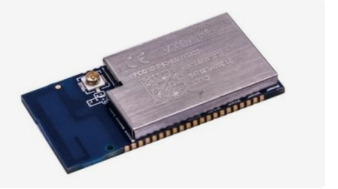
In addition, the use of walkie-talkies can also be divided into explosion-proof and non-explosion-proof mine walkie-talkies for underground use in terms of specific functions. The corresponding explosion-proof certification and coal safety certification are all certifications that manufacturers need. Of course, if you buy a walkie-talkie personally, you generally don't go to the radio to apply, because the General Armed Forces Committee doesn't care about these things.
ZHONGREN provides SRRC certification, CCC certification, CTA certification and other product certification services. We continue to gather wisdom and accumulate experience. In line with the service concept of "quality and service are the root of the laboratory and the foundation of the enterprise", we provide the best service Assist customers to quickly obtain domestic and foreign certification, get the support of more than thousands of customers and many cooperative organizations, and win the market. Please look for a professional compliance firm.
0 notes
Text
El primer teléfono inteligente con cámara debajo de la pantalla está listo para ser lanzado
El primer teléfono inteligente con cámara debajo de la pantalla está listo para ser lanzado
ZTE está preparada para ser pionera en una tecnología que se ha estado rumoreando bastante y que, hasta el sol de hoy, no ha sido presentada en su forma final. Esta es la de la cámara selfie integrada debajo de la pantalla, un menudo dolor de cabeza que vaya que ha puesto a prueba a los ingenieros de compañías como Honor, OnePlus, Xiaomi y otras más, pues ha presentado deficiencias muy marcadas en su desarrollo.
Esta tecnología, hasta hace no mucho, fue reportada por fuentes cercanas a varias de las firmas mencionadas como un fracaso, pues algunos de los tantos problemas de su implementación fueron la calidad de imagen final deficiente y matices de brillo y color distorsionados en el área de la pantalla donde se coloca la cámara… Lo bueno es que parece que ZTE ha conseguido resolver estos inconvenientes, sugiriéndonos así que será la primera que lanzará un móvil con dicha cámara selfie debajo de la pantalla, y muy pronto.
ZTE será la primera en traernos un móvil con cámara debajo de la pantalla
El presidente de la firma china, Ni Fei, a través de su cuenta de Weibo, realizó una publicación con la cámara en pantalla del ZTE A20 5G. Esta afirma que la marca está lista para anunciar pronto su primer teléfono con cámara debajo de la pantalla.
Ni Fei revela que el primer smartphone del mundo con cámara debajo de la pantalla será de ZTE
El alto ejecutivo no brindó ninguna imagen del dispositivo; tampoco reveló grandes detalles sobre este y su fecha de lanzamiento, por lo que seguimos con mucha curiosidad ante tal innovación. Lo bueno es que el nombre del mismo fue revelado, razón por la cual sabemos que el próximo y primer buque insignia en debutar con dicha tecnología será el A20 5G, el cual ya está en las manos de Fei y parece estar en funcionamiento y ansioso de salir al mercado más temprano que tarde
Recientemente se detectó una lista en el Reglamento de radio estatal de China (SRRC) para el supuesto ZTE A20 5G, que revela su soporte de banda y el número de modelo «ZTE A2121». Esto nos indica que ya está certificado por esta reguladora, y que podría ya estarlo también con otras más.
Quedamos a la espera de que plataformas como TENAA o 3C nos ofrezcan más detalles de sus características y especificaciones técnicas antes de que este teléfono inteligente sea anunciado y/o lanzado por el fabricante este año, ya que ambas certificadoras suelen filtrar las cualidades de los próximos móviles chinos antes de que vean luz.
Por otro lado, en cuanto a la inversión de la cámara selfie integrada en pantalla, Visionox es la firma encargada del desarrollo de la tecnología de «cámara selfie invisible» de ZTE. Esta afirma haber resuelto los problemas anteriormente mencionados con una combinación de nuevos algoritmos de hardware y software de visualización, la cual se encarga de mejorar los ángulos de visión y hacer que haya menos deslumbramiento. Sin embargo, tenemos que esperar a ver qué tan buenos -o no- son los resultados logrados.
Las muescas y módulos emergentes para cámaras selfie dejarían de ser tan usadas dentro de poco
En junio del año pasado, Honor dio a conocer que a dicho avance le faltaba mucho trabajo por delante antes de que aparezca en algunos de los móviles de la compañía. Sin embargo, consideró que será exitosa e iba a ser posible que en un futuro próximo de aquel entonces iba a estar siendo presumida por algunos móviles de la marca, pero hasta ahora no hemos recibido noticias la compañía y su trabajo, lo que nos indica que podría seguir presentando fallas.
Una información filtrada de Xiaomi hace ya poco más de un año nos reveló que la cámara debajo de la pantalla podía ser visible e invisible cuando se quisiera, algo bastante peculiar que fue explicado sin grandes detalles y nos dejó con muchas dudas de cómo esto funcionaría realmente.
Será interesante saber cómo los fabricantes de teléfonos inteligentes acoplarán esta innovación dentro de poco, y qué desempeño tendrán «las cámara selfies invisibles en pantalla». Las expectativas que ponemos sobre la mesa son altas; no esperamos poco.
Androidsis https://ift.tt/2PNqPYs
0 notes
Text
En el sitio chino de certificación TENAA ha aparecido un conjunto de imágenes, que revelan un teléfono inteligente del fabricante chino Meizu hasta ahora desconocido. Este dispositivo esta etiquetado como Meizu M822Q y podría ser el esperado Meizu M8 Note.
Las imágenes que aparecen en TENAA muestran el diseño del teléfono inteligente, pero no muestran ninguna información acerca de las especificaciones con las que contará este dispositivo. Vemos en las imágenes que el M822Q tiene una pantalla alta sin muesca por lo que podría tener una relación de aspecto de 18:9. Al parecer, este teléfono estaría llegando para el segmento de rango medio por lo que podemos presumir que la pantalla vendría con un tamaño de 5.99 pulgadas con una resolución de 2160 x 1080 pixeles.
En la parte posterior encontramos una configuración de cámara doble alineada verticalmente y un sensor de huellas dactilares justo debajo de ella. En su parte delantera solo hay una cámara para la toma de selfies. En el costado derecho del teléfono podemos ver el control de volumen y un poco más abajo vemos la presencia de un botón de encendido. Solamente se encuentran estos dos elementos en el lado derecho del teléfono, lo que nos da a pensar que la bandeja SIM está ubicada en la parte superior del dispositivo.
Luego de haber recibido la certificación SRRC y ahora visitar TENNA, es un indicio que el Meizu M822Q estaría próximo a su lanzamiento. Este teléfono podría llegar a China como Meizu M8 Note, con especificaciones de rango medio y un precio asequible.
¿Piensas que el teléfono inteligente M822Q podría ser el tan esperado Meizu M8 Note?
Meizu M822Q visita TENAA, se especula que podría ser el Meizu M8 Note En el sitio chino de certificación TENAA ha aparecido un conjunto de imágenes, que revelan un teléfono inteligente del fabricante chino Meizu hasta ahora desconocido.
0 notes
Text
Scope of Toy 3C Certification
Scope of Toy 3C Certification
Scope of Toy 3C Certification:
(1) Baby carriages: Applicable to baby carriages designed or intended for children to ride and play, including: children's bicycles (the height of the large saddle is within the range of 435mm to 635mm), children's tricycles, children's strollers, baby walkers, Toy bicycles (the height of the large saddle is less than 435mm), electric baby carriages, and other toy vehicles.
(2) Electric toys: Applicable to toy products designed or intended to be played by children under the age of 14, and at least one function requires the use of electric energy, including electric toys of various materials, video toys, sound and light toys, etc. Note: not included Transformer and battery charger.
(3) Projectile toys: Applicable to those designed or intended to be played by children under the age of 14, energy-storage projectile toys that launch projectiles through an ejection mechanism that can store and release energy, and non-energy-storage projectiles that launch projectiles with energy given by children Toy products of toys, excluding catapults, slingshots, darts or darts with metal tips, pneumatic and pneumatic gas guns and air pistols, bow and arrow devices with a maximum slack length of the bowstring greater than 120cm.
(4) Metal toys: applicable to non-electric toy products designed or intended to be played by children under the age of 14, the main body of which is made of metal materials, and not intended to bear the weight of children, including static metal toys and motorized metal toys, excluding Similar to stationery toys, mouth-moving toys, etc.

(5) Applicable to non-electric figure doll toy products designed or intended to be played by children under 14 years of age, with at least the head and limbs made of non-woven polymeric materials, with clothing or bodies filled with soft materials.
(6) Plastic toys: applicable to non-electric toy products designed or intended to be played by children under the age of 14, the main body of which is made of plastic, and not intended to bear the weight of children, including static plastic toys and motorized plastic toys. Excluding inflatable toys, mouth-actuated toys, similar stationery toys, water toys, etc.
CCC certification
(7) Static toys: 3C certification is required for interlocking toys, 3C certification is required for handheld toys, 3C certification is required for dolls (3C certification is required for dolls, 3C certification is required for cars), 3C certification is required for drag toys, and 3C certification is required for building block toys.
2. It should be noted that the following toy products do not need 3C certification:
1. Soft stuffed toys;

2. Paper and cardboard toys: paper toy books, jigsaw puzzles, origami toys;
3. Mouth-moving toys: whistles, horns, teethers, toy pacifiers;
4. Bamboo and wood toys;
5. Similar stationery and toy products: paints such as watercolours, oil paintings, finger paintings, etc.; crayons, oil pastels; various pens.
ZHONGREN is a professional compliance firm that helps manufacturers enter China efficiently. We can provide a one-stop service for CCC, SRRC, NAL and other certifications. With our more than 10 years of expert experience, we can help you find the best way to enter the Chinese market. We are not only an efficient and reliable partner, but also share your busy to-do list and provide one-stop service, so that you can rest assured and rest assured!
0 notes